Empowered
for More
MORE fit · MORE efficient · MORE than a blade stem
6340244584112 Watch Video
Your patients are demanding more from their implants: more activity and mobility, quicker recovery, and longer lasting implants. Meanwhile, your hospitals are demanding more: more throughput, more patients treated, and greater efficiencies. EMPOWR™ blade stem is empowering you to make “more” a reality.
To help recreate your patients’ anatomy and desired fit and to ensure long-term stability, EMPOWR blade stem was designed to be slightly more A/P filling than traditional blade stems1. With design elements that enable easy intra-operative decisions, flexibility to accommodate your preferred surgical approach, and one tray instrumentation, this system is efficient in and out of the OR.
EMPOWR blade stem is
MORE than a blade stem.
Enhanced
Metaphyseal Fill
Building on the legacy of Linear® Hip Stem, EMPOWR blade stem features a 6-degree proximal taper, which provides enhanced metaphyseal fill compared to traditional blade stems1 allowing for better fixation, reduced torsional motion, and reduced implant loosening/subsidence, while also maintaining a balance of fit and fill in the femoral canal.

Optimized Proximal-distal Proportions
EMPOWR blade stem features progressive distal lateral reduction and reduced length, helping to achieve desired stability and reduce the chances of distal potting.3,4
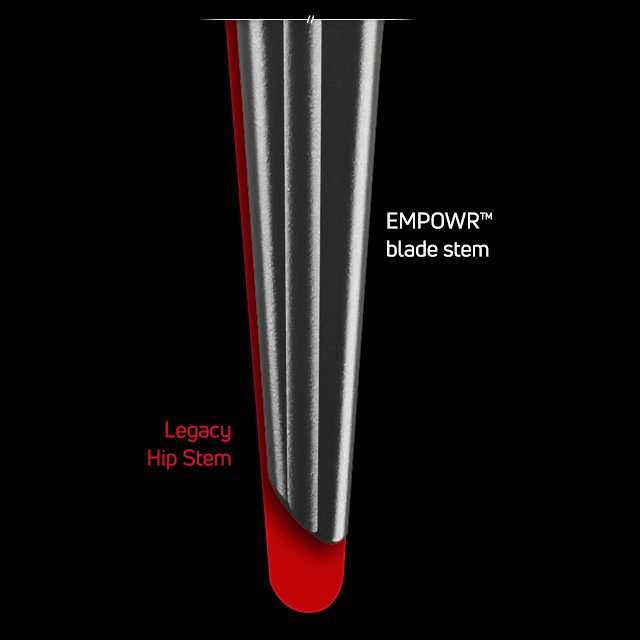
Clinical Legacy Of 20+ Years
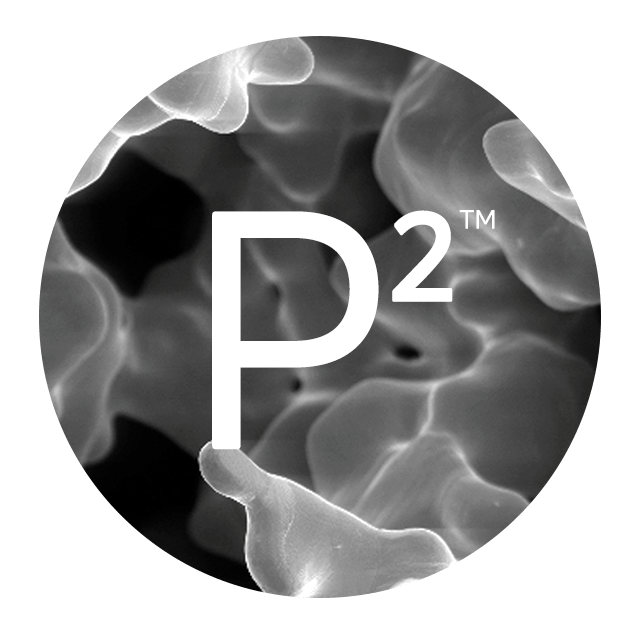
P2™ Porous Coating
Enovis’ proprietary P2™ porous coating further helps achieve enhanced fixation with its unique structure and material characterization. It has a higher surface roughness than newer generations of non-spherical beads, providing for more bone apposition and percent bone in-growth.5,6
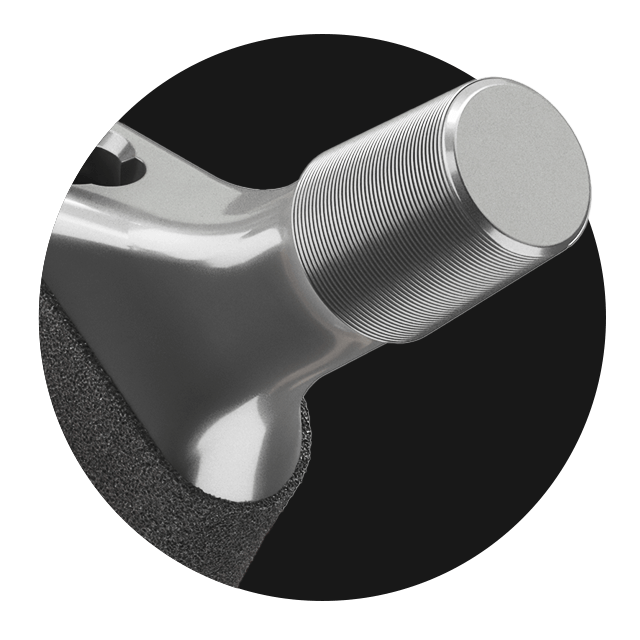
Micro-threaded Trunnion
Enovis’ legacy 12/14 robust, micro-threaded trunnion, that is known to protect against fretting corrosion3, ultimately helping reduce revision burden7,8.
Built on the legacy of Linear® Hip Stem with one of the lowest revision rates for cementless stems in primary THA9
Post-op
.73 Linear Hip Stem vs. 1.32 Accolade
Post-op
1.05 Linear Hip Stem vs. 1.83 Accolade
Post-op
1.21 Linear Hip Stem vs. 2.10 Accolade
Post-op
1.21 Linear Hip Stem vs. 2.20 Accolade
For all surgical approaches
Designed to accommodate all surgical approaches, especially the minimally invasive procedures with a shortened stem, easy lead distal tip, and medialized insertion feature
Shortened Stem
EasyLead™
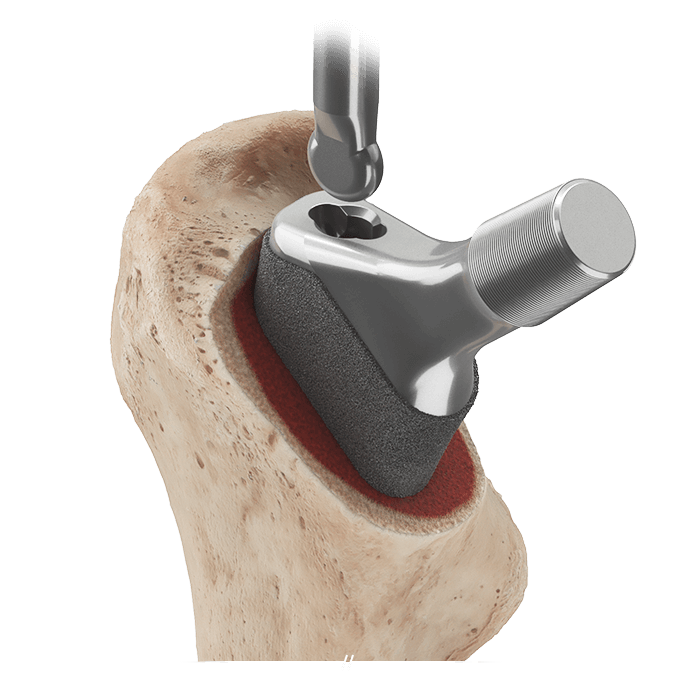
Medialized Insertion Feature

Simplifying The Intraoperative Experience
Nearly one in ten patients suffer from varus deformity and even more may require intraoperative varus correction.10,11 The EMPOWR blade stems feature coxa vara, standard and direct lateral offset options. When coupled with an expansive size offering and constant neck length, restoration of patient anatomy is a streamlined, flexible intraoperative experience requiring minimal calculations for offset changes.

50% Tray Reduction
Whether in a hospital or ASC, our mission is to maximize cost and process efficiency without sacrificing functionality or performance. Our carefully designed instrumentation platform reduces overall tray burden by ~50%, employing a single femoral prep tray for the posterior approach and adding only a small broach ½ tray for DAA.
See what EMPOWR™ blade stem surgeons are saying.

- Competitive data retrieved from competitor’s website
- Cameron HU, Pilliar RM, MacNab I. The effect of movement on the bonding of porous metal to bone. J Biomed Mater Res 1973;7(4):301.
- https://www.ncbi.nlm.nih.gov/pmc/articles/PMC1924521/AJRR reference of Linear longevity
- Report on file with Enovis Surgical, IRPD-2023-0018
- Based on ONN 2022 Hip and Knee Update – Jul issue
- Data on file at DJO Surgical.
- Berstock, J.R., et al. (2018). Trunnion Corrosion: What Surgeons Need to Know in 2018. The Bone and Joint Journal. 100-B(1 Supple A):44–9. http://bjj.boneandjoint.org.uk/content/100-B/1_Supple_A/44).
- Trunnionosis accounts for a higher revision burden than infection (~2% vs. ~1%) – Reference (Springer, Bryan D., et al. (2017). Infection burden in total hip and knee arthroplasties: an international registry-based perspective. Arthroplasty Today 3:2: 137-140)
- AJRR 2022 Report
- https://www.ncbi.nlm.nih.gov/pmc/articles/PMC2600987/
- https://www.physio-pedia.com/Coxa_Vara_/_Coxa_Valga